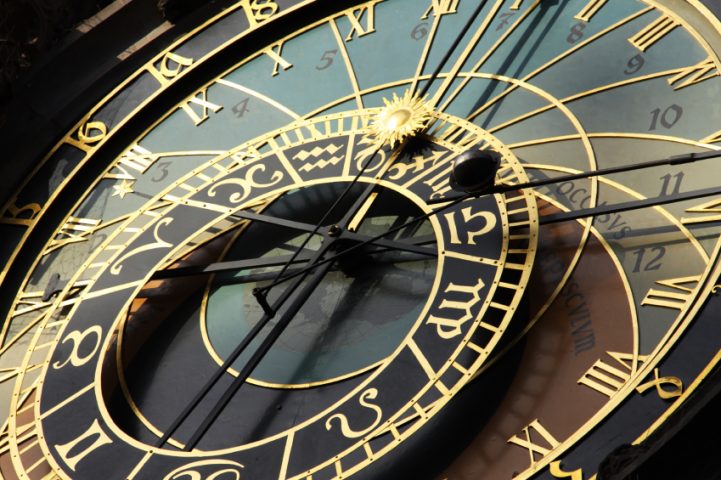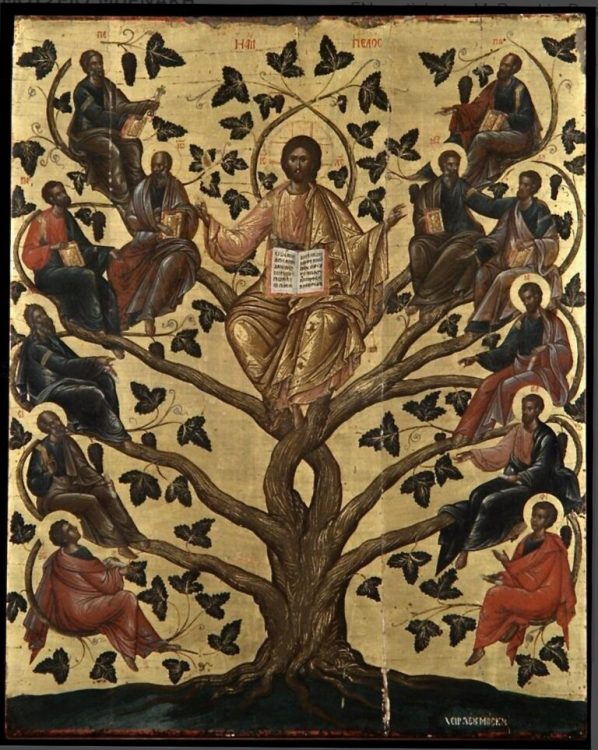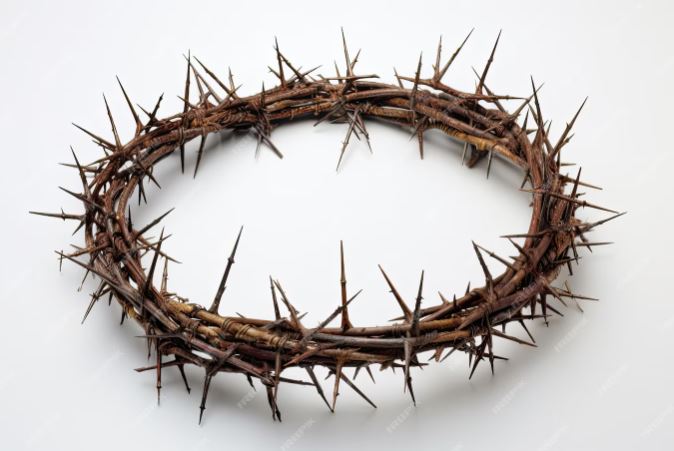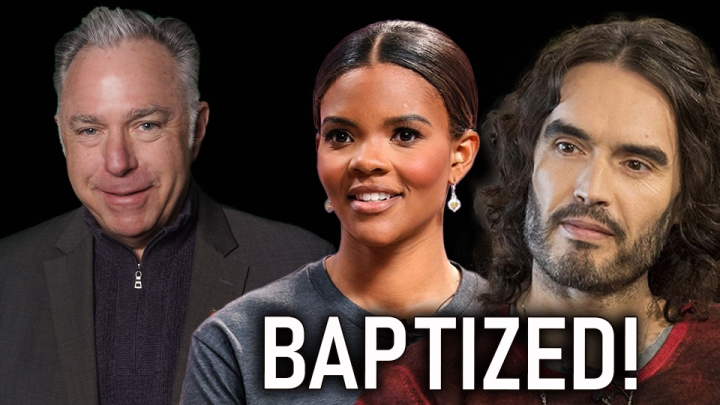Anti-Human-Trafficking Film ‘Sound of Freedom’ Just Topped ‘Indiana Jones’ at Box Office, by Peter Pinedo
July 8, 2023Saint of the Day for July 10: St. Veronica Giuliani
July 10, 2023
By Msgr. Charles Pope, July 7, 2023
The Catholic approach to the end times is different from that in certain (but not all) Protestant circles, especially the Evangelicals, who have a strong and often vivid preoccupation with signs of the Second Coming of Christ. Many of the notions that are expressed there are either erroneous or extreme. Some of these notions are rooted in a misunderstanding of the various genres of Scripture; others are caused by reading certain Scriptures in isolation from the wider context of the whole of Scripture; and some are rooted in reading one text while disregarding others that balance it.
The Catholic approach to eschatology is perhaps less thrilling and provocative. It does not generate movie series like “Left Behind” or cause people to sell their houses and gather on hillsides waiting for the announced end. It is more methodical and seeks to balance a lot of notions that often hold certain truths in tension with one another.
What I offer here I do not propose to call a complete eschatology, only a sketch of basic principles rooted in the Catechism of the Catholic Church.
While we cannot know the exact time of His coming, there are things that both remind us of and signal His approach—if we have eyes to see them. These signs give indications only. The presence of such texts cannot be seen to overrule that He will come “on a sudden” and that many will be caught unawares.
Here are some notes from the Catechism (in black, the Blue and Red texts are my additions/comments).
1. Soon and Sudden – Since the Ascension, Christ’s coming in glory has been imminent (Rev 22:20), even though “it is not for you to know times or seasons which the Father has fixed by his own authority”(Acts 1:7). This eschatological coming could be accomplished at any moment, even if both it and the final trial that will precede it are “delayed” (Mat 24:44; 1 Thess 5:2; 2 Thess 2:3-12) (CCC # 673).
Of all the points the Catechism makes, this one sets the tone of balance that must be maintained. On the one hand Christ says that He is coming soon and that His coming could be both sudden and without warning, but this truth must be held in tension with other truths that set forth certain things that must be accomplished and certain signs that must appear before then. And these things are not easily or quickly accomplished.
2. Suspended – The glorious Messiah’s coming is suspended at every moment of history until his recognition by “all Israel” (Romans 11:20-26; Mat 23:39), for “a hardening has come upon part of Israel” in their “unbelief” (Romans 11:20-26) toward Jesus. St. Peter says to the Jews of Jerusalem after Pentecost: “Repent therefore, and turn again, that your sins may be blotted out, that times of refreshing may come from the presence of the Lord, and that he may send the Christ appointed for you, Jesus, whom heaven must receive until the time for establishing all that God spoke by the mouth of his holy prophets from of old. (Acts 3:19-21)” St. Paul echoes him: “For if their rejection means the reconciliation of the world, what will their acceptance mean but life from the dead?” (Rom 11:15) The “full inclusion” of the Jews in the Messiah’s salvation, in the wake of “the full number of the Gentiles” (Rom 11:12), will enable the People of God to achieve “the measure of the stature of the fullness of Christ”, in which “God may be all in all” (Eph 4:13; 1 Cor 15:27-28) (CCC # 674).
This going forth of the Gospel to all the nations and the acceptance of Christ by the Jews would seem to be matters that would take some time.
Has the Gospel really reached all the nations? Have the full number of Gentiles come in and are they serving God and repenting in sufficient numbers? Perhaps so, one might argue. There are very few places in the world where there is no Christian presence, and yet on a planet of seven billion people less than a third are Christian. And what is meant by the “full number” of Gentiles? That number is hidden from us and can surely be debated.
Has the “hardening” that has come upon the Israel been lifted? This, too, is debatable. Despite certain movements of “Messianic Jews,” it does not seem that the hardening that has come on Israel has been lifted in any wide sort of way or that Jesus has been recognized by “all Israel.”
3. Suffering and Sedition– Before Christ’s second coming, the Church must pass through a final trial that will shake the faith of many believers (Luke 18:8; Mt 24:12). The persecution that accompanies her pilgrimage on earth will unveil the “mystery of iniquity” in the form of a religious deception offering men an apparent solution to their problems at the price of apostasy from the truth. The supreme religious deception is that of the Antichrist, a pseudo-messianism by which man glorifies himself in place of God and of his Messiah come in the flesh (2 Thess 2:4-12; 1 Thess 5:2-3; 1 Jn 2:18-22) (CCC # 675).
Clearly, many of these troubles have afflicted the Church in every age. There has always been persecution. Many have fallen away—most into schism, some into unbelief. There have also been times when the love of many has grown cold.
Clearly these are severe problems and they have grown to envelop most of the world today. Only God knows when these signs will be present in a definitive rather than merely prefigurative way.
4. Secular Utopianism Rejected – The Antichrist’s deception already begins to take shape in the world every time the claim is made to realize within history that messianic hope which can only be realized beyond history through the eschatological judgment. The Church has rejected even modified forms of this falsification of the kingdom to come under the name of millenarianism, especially the “intrinsically perverse” political form of a secular messianism (CCC # 676).
Many in human history, and especially in modern times, have advanced the notion that a secular utopia can be ushered in by human effort and by submitting to a government or worldly power or a charismatic figure.
Many repressive regimes and movements (often led by powerful or charismatic leaders) of the last century claimed the power to usher in such a utopia. The sad legacy of the 20th century shows how tragic and bloody such attempts have been.
The Church also rejects religious forms of this idea, which hold that prior to the Second Coming of Christ a period of a thousand years is set aside during which Christ will reign on earth or during which the Church will somehow attain a total victory prior to His Second Coming.
5. Second Coming follows a final unleashing of evil – The Church will enter the glory of the kingdom only through this final Passover, when she will follow her Lord in his death and Resurrection (Rev 19:1-9). The kingdom will be fulfilled, then, not by a historic triumph of the Church through a progressive ascendancy, but only by God’s victory over the final unleashing of evil, which will cause his Bride to come down from heaven (Rev 13:1ff; Rev 20:7-9; Rev 21:2-4). God’s triumph over the revolt of evil will take the form of the Last Judgment after the final cosmic upheaval of this passing world (CCC # 677).
A final and intense unleashing is envisaged by Scripture and the Church, and this cosmic conflict will usher in the great triumph and the Last Judgment. This unleashing of the full power of the Devil in the very end is mysterious and difficult to understand, but it is clearly set forth in Scripture—perhaps as a final test for the Church, perhaps as a definitive demonstration of the power of God.
Balance! Please note that while we may wish to focus on just one or two of the points above, each of the five points must be held in balance. In one sense all of these signs have been present in the Church’s history, yet not in the definitive and final sense.
Thus, while these are signs that do in fact signal, accompany, and usher in the last things, exactly when and how they come together in a definitive sense cannot be known by us. If we could know, then Christ’s clear words that He will come at an hour we do not expect (cf Mat 24:44) and that no one knows the day or hour (cf Matt 24:36) would be violated.
The key point is that we must hold all five principles in balance and must accept the tension of knowing the signs but not the definitive timing.
Most errors in eschatology proceed from a lack of balance and a failure to appreciate that the final age in which we live is steeped in mysteries and meanings known fully only by God. Time itself is mysterious as are the deeper meanings of events and human history. The Lord, while giving us a framework that reminds us of His coming and signals us in a merciful way to remember, has insisted that it is not for us to know the time or season fixed by the Father, let alone the day and hour.
Humility, prayerful vigilance, readiness through obedience and the gift of holiness, along with an eager, longing heart for the Kingdom in all its glory, represent our best posture.
The Catholic approach may not be the stuff of movies or bestsellers, but it is the balanced and trusting faith to which we are summoned.
He who testifies to these things says, “Yes, I am coming soon.” Amen. Come, Lord Jesus. The grace of our Lord Jesus be with you all. Amen (Rev 22:20-21).







